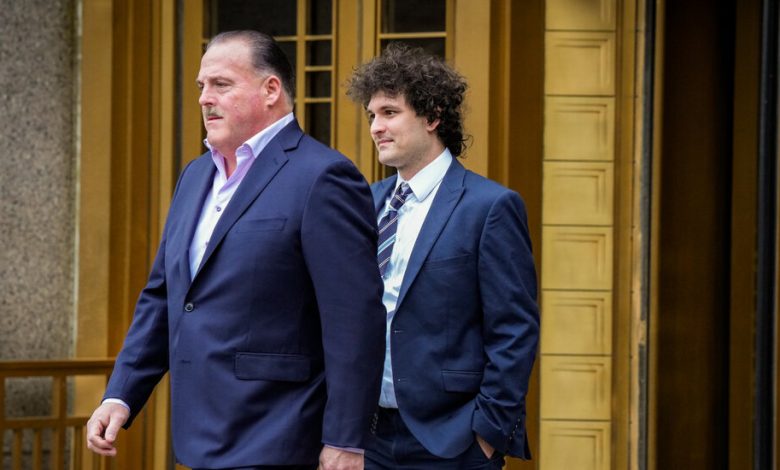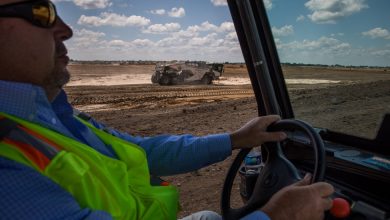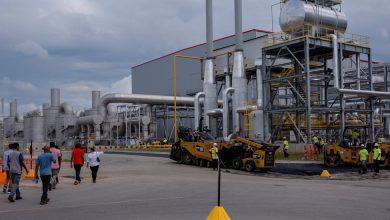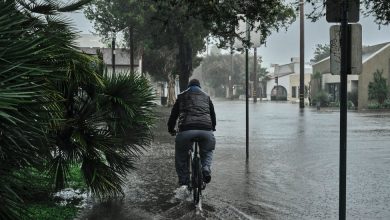Sam Bankman-Fried Testifies That He Made ‘Larger Mistakes’ at FTX

From the moment his cryptocurrency empire collapsed in November, Sam Bankman-Fried didn’t stop talking.
Against the advice of his defense lawyers, Mr. Bankman-Fried embarked on a lengthy press tour to explain the failure of his FTX cryptocurrency exchange, giving interviews to TV anchors and obscure Twitter personalities. After he was charged with fraud and placed under house arrest, he invited reporters to visit him so he could continue defending his actions.
On Friday, Mr. Bankman-Fried, 31, made an even riskier call: He took the stand to testify at his criminal fraud trial in federal court in New York.
Over five and a half hours of testimony, Mr. Bankman-Fried denied that he had committed fraud or stolen from FTX’s customers, while emphasizing his efforts to make the exchange successful. But he also acknowledged that he had made mistakes, citing “significant oversights” that hurt FTX’s customers.
Wearing a gray suit and purple tie, with his famously tousled hair cut short by a fellow inmate at the jail where he is detained, Mr. Bankman-Fried said he had “made a number of small mistakes, and a number of larger mistakes.”
FTX was supposed to “move the ecosystem forward,” he testified. “It turned out the opposite of that.”
Mr. Bankman-Fried’s testimony was the most anticipated moment of a trial that has become a referendum on the excesses of the once-highflying crypto industry. The entrepreneur, who positioned himself as the face of the industry when the prices of digital coins like Bitcoin and Ether were surging, emerged last year as a cautionary tale of the unfettered hubris and risk-taking that cost customers billions of dollars when the crypto market crashed.
His decision to testify was an enormous risk. Lawyers usually advise criminal defendants not to take the stand, so that prosecutors don’t have the chance to catch them in contradictions.
But after weeks of damaging testimony from his closest friends and colleagues, Mr. Bankman-Fried was left with little choice but to make a long-shot attempt to change the course of the trial. He was the defense’s third and final witness, and he took the stand after an unusual hearing on Thursday delayed his testimony by a day.
“The risks that come with testifying are massive and numerous,” said Daniel Silva, a former federal prosecutor now in private practice. “S.B.F. will be subject to extensive impeachment from prosecutors based on the significant public and private statements he has made.”
Mr. Bankman-Fried was arrested in December and charged with orchestrating a yearslong scheme to misappropriate as much as $10 billion from customers who had deposited their savings in FTX. Prosecutors accused him of funneling the money into venture capital investments, political contributions and extravagant real estate purchases. They also said he used the funds to prop up a crypto trading firm he founded, Alameda Research.
His trial has been the most closely watched white-collar fraud case since Elizabeth Holmes, the founder of the blood-testing start-up Theranos, was convicted and sentenced to 11 years in prison in 2022. Mr. Bankman-Fried, who has pleaded not guilty, could receive what would amount to a life sentence if a jury convicts him on seven counts of fraud, conspiracy and money laundering.
Mr. Bankman-Fried’s defense faces significant hurdles, after a procession of former FTX and Alameda employees testified that he had lied to the public and stolen money from FTX’s customers for years. On cross-examination, his lead lawyers, Mark Cohen and Christian Everdell, struggled to poke holes in the witnesses’ testimony, stymied by objections from the prosecutors.
But Mr. Bankman-Fried’s decision to testify gave the defense an opportunity to tell its side of the story.
When he took the stand on Friday morning, the FTX founder showed little emotion as he defended his decisions in front of a packed courtroom. Court officials set up a line of folding chairs in the gallery to accommodate a group of visiting students. Mr. Bankman-Fried’s parents, the Stanford law professors Joe Bankman and Barbara Fried, also watched from the pews, scribbling notes on a legal pad. The author Michael Lewis, who recently published a book about the FTX founder, sat a couple of rows behind them.
Mr. Bankman-Fried began his testimony with a mea culpa, acknowledging that FTX’s collapse had hurt people throughout the crypto industry. All he had wanted to do, he said, was “build the best product on the market.”
Under questioning from Mr. Cohen, Mr. Bankman-Fried walked the jury through his biography, from his upbringing in Palo Alto, Calif., to his undergraduate education at the Massachusetts Institute of Technology. In college, he said, he belonged to an unusual kind of fraternity that was “coed, nerdy and dry,” before graduating into a job at the Wall Street trading firm Jane Street.
At times, he cast himself as something of a novice. When he started trading cryptocurrencies with Alameda in 2017, he said, “I had absolutely no idea how it worked.”
His business empire grew faster than he had ever imagined, Mr. Bankman-Fried testified. He was soon working 22-hour days, he said, and receiving thousands of emails daily. He also started making political donations, he said, after concluding that “I could have a substantial impact on the world.”
Mr. Bankman-Fried suggested that the sheer volume of work caused him to ignore important parts of the business. Asked whether FTX had a risk management department, he said, “We sure should have, but no we did not.”
That exchange echoed a core claim in Mr. Cohen’s opening statement: that Mr. Bankman-Fried was effectively building a plane in midair, and acting in “good faith” the whole time.
Mr. Bankman-Fried also reiterated several other claims that his lawyers have pressed throughout the trial. He denied illegally backdating documents, and said he used legitimate sources of funding to finance investments and real estate purchases.
He also blamed the problems at Alameda on Caroline Ellison, the firm’s chief executive and his former girlfriend, saying she had failed to properly manage risk. (Ms. Ellison has pleaded guilty and testified against Mr. Bankman-Fried.) He learned about an $8 billion hole in FTX’s accounts much later than prosecutors had asserted, he added.
At times during the testimony, Mr. Bankman-Fried seemed strikingly relaxed, smiling and making occasional wisecracks. He said he had passed on a possible stadium sponsorship with the Kansas City Royals because he didn’t want FTX “to be known as the Kansas City Royals of crypto exchanges.” Asked why his hair was so unkempt throughout his tenure at FTX, he said, “I was kind of busy and lazy.”
Mr. Bankman-Fried is likely to face a much tougher time under cross-examination, which could begin as soon as Monday when the trial resumes.
A preview of that testimony unfolded on Thursday, when the judge overseeing the case, Lewis A. Kaplan, held a hearing in which Mr. Bankman-Fried offered testimony on a narrow set of topics without the jury present.
Under intense questioning from a prosecutor, Mr. Bankman-Fried peppered his responses with “ums” and “ahs,” and often stared down at his lap as he considered what to say, especially when he was asked if he had sought advice from his lawyers on whether Alameda could borrow billions of dollars from FTX’s customers.
Judge Kaplan repeatedly chastised him for failing to answer questions directly.
“The witness has what I’ll simply call an interesting way of responding,” Judge Kaplan said.





